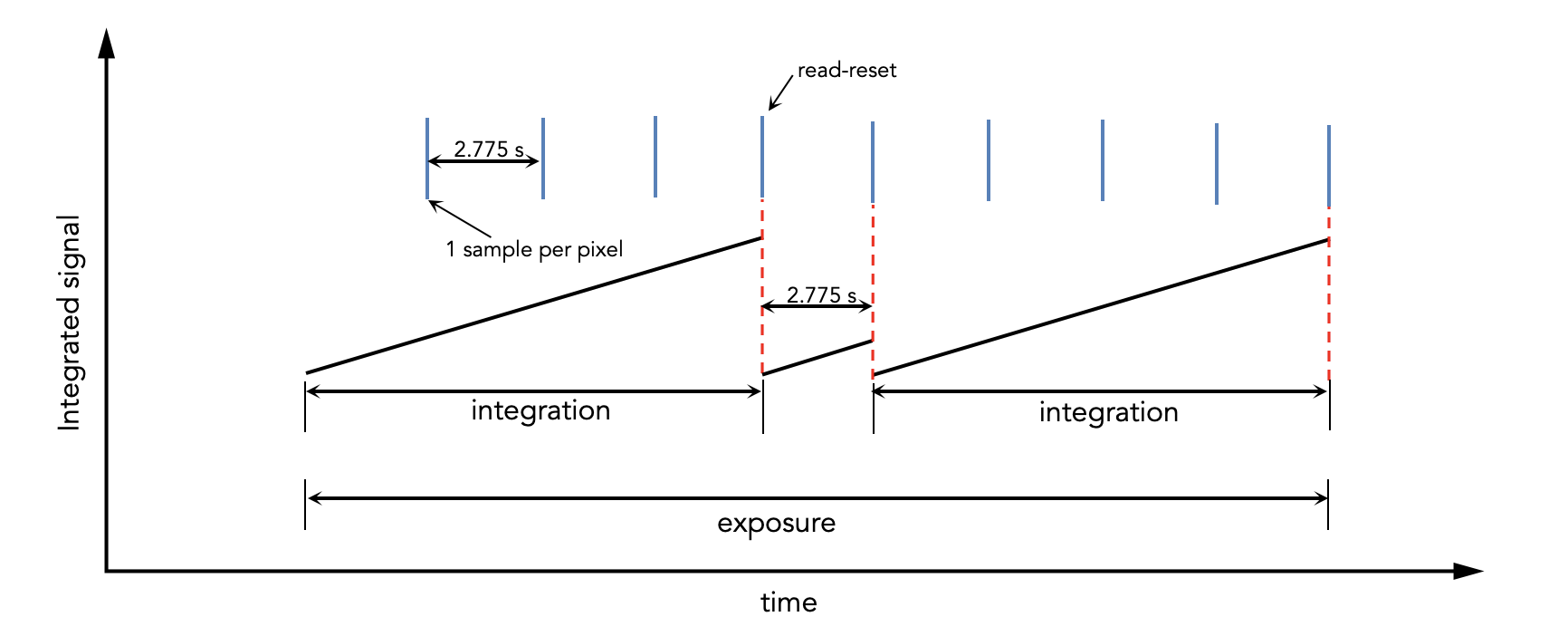MIRI Detector Readout FASTR1
FASTR1 mode provides short MULTIACCUM exposures to maximize dynamic range and minimize noise in a background-dominated regime. It is the default readout mode for imaging, medium-resolution spectroscopy and low-resolution slit spectroscopy, and it is the only available readout mode for coronagraphy, low-resolution slitless prism spectroscopy and subarray imaging.
Words in bold are GUI menus/
panels or data software packages;
bold italics are buttons in GUI
tools or package parameters.
Nsample = 1 is a fixed parameter in the FASTR1 mode and cannot be altered by the observer. In FASTR1 mode it is currently advised to use a minimum of 5 groups (Ngroups = 5) per integration to optimize the slope-fitting algorithm. The user can alter the number of groups (Ngroups) and integrations (Nint). All groups will be stored and downloaded.
Compared to the MIRI traditional FAST mode (see Ressler et al. 2015), FASTR1 introduces an additional reset between integrations, thus improving the absolute flux calibration and making it possible to achieve flux accuracy requirements.
Pixel perspective
While not integrating, the MIRI detectors continue to be clocked but the pixels in the MIRI detectors are reset every frame. Once the exposure starts the FASTR1 readout pattern executes Ngroups − 1 non-destructive frames. The focal plane electronics (FPE) dwells at each pixel for Nsample = 1 (10 µs total). The time between sampling an individual pixel is t1 = 2.775 s because the entire sensor chip assembly (SCA) is read before returning to the pixel. The final group of the integration is a read-reset, yielding the total of Ngroups reads. In multiple integration data the read-reset is followed by an additional reset frame that takes 2.775 s. This integration timing pattern may be repeated Nint times for an exposure, with the last integration ending in a read-reset. The duration of a single exposure in FASTR1 will therefore be:
Exposure_duration = (Ngroups × 2.775 s × Nints) + (2.775 s × (Nints-1))
